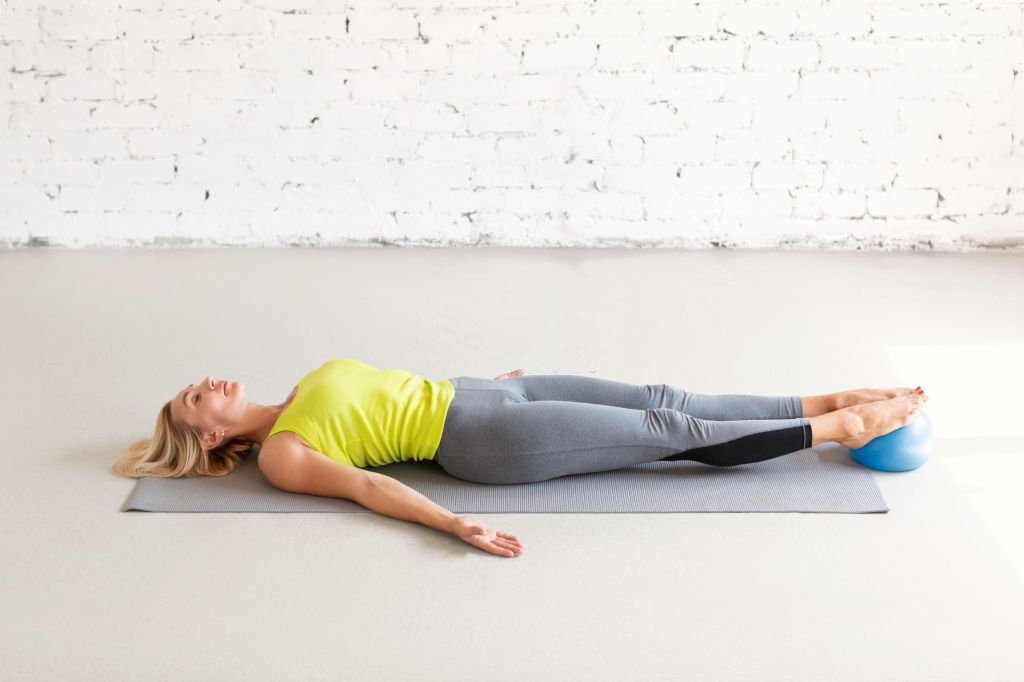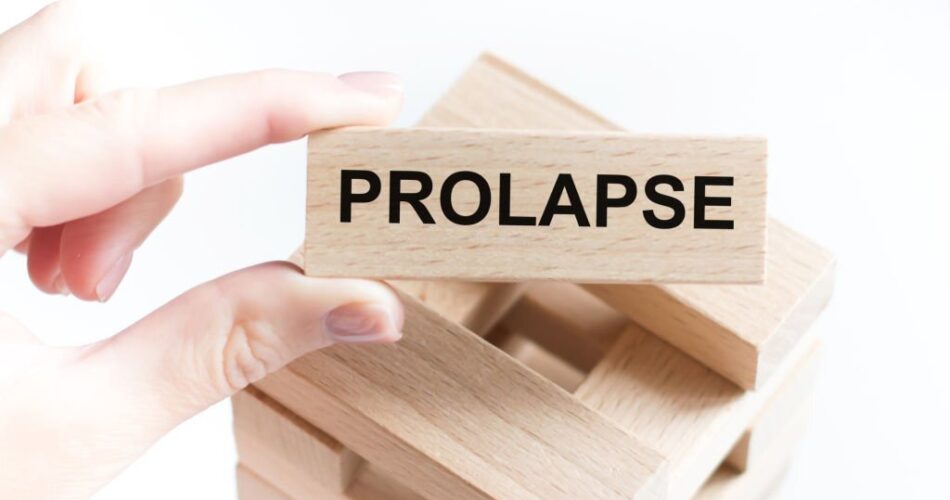More than one-third of women have a high risk of pelvic prolapse, including vaginal prolapse. Nevertheless, not all cases require surgery for recovery. Most cases of vaginal prolapse can be successfully treated with natural remedies and medical procedures. Here we will discuss the natural remedies for vaginal prolapse in detail, so keep reading.
Table of Contents
What Is Vaginal Prolapse?
The condition in which the top of the vagina dislocates from its normal position. The vagina, also known as the birth canal, is the tube that connects with the uterus through the cervix. When vaginal muscles weaken, it results in vaginal prolapse and adversely affects the nearby organs.
The vagina is kept in its normal location with the help of the pelvic muscles. As the person ages, pelvic muscles start weakening, which can result in organ sagging. Due to weak pelvic floor muscles, the organs can dislocate from their positions and result in prolapse.
When your vaginal opening is completely prolapsed, your organs can come out. This prolapse is very chronic and causes severe pain. Acute vaginal prolapse can be recovered without any surgical incision. However, chronic vaginal prolapse needs surgery.
What Are The Symptoms Of Vaginal Prolapse?
Women with vaginal prolapse can experience the below-mentioned symptoms.
- Pelvic pain
- Urination Incontinence
- Bulging in the vagina
- Bladder infection
- Vaginal infection
- Painful intercourse
- Pain in the lower back
- The feeling of heaviness in the pelvic region
What Are The Causes Of Vaginal Prolapse?
Women can experience vaginal prolapse due to the below-mentioned causes.
Childbirth
Females who have undergone multiple deliveries are at risk of developing vaginal prolapse. Studies have found that females with vaginal deliveries experience more vaginal prolapse than those who have undergone C-sections.
Menopause
Menopause cause a hormonal imbalance in the body. The level of sex hormones such as estrogen decreases after menopause which causes the significant weakening of the pelvic floor muscles. Weakened pelvic muscles increase the risk of vaginal prolapse.
Hysterectomy
Patients who have undergone a hysterectomy, a surgery to remove the uterus, are at a higher risk of developing a hysterectomy.
Aging
Vaginal prolapse is more likely to occur among older females. It is because of the weakening of the pelvic floor muscles, which is further due to a decline in the level of certain hormones in the body.
Genetics
Sometimes, hereditary characteristics or genetics can also be a reason for vaginal prolapse. Females may have weak prolapse muscles by birth, which can result in prolapse.
Heavy Physical Exercise
Physical exercises or heavy lifting, which strain the pelvic muscles, also increase the risk of vaginal prolapse.
Other Causes
In rare cases, obesity, chronic constipation, and severe cough can lead to vaginal prolapse by stressing the vaginal muscles.
Natural Remedies For Vaginal Prolapse
There is no need for surgeries in acute or mild vaginal prolapse. Specific exercises and medical procedures are usually recommended to recover the symptoms of this kind of vaginal prolapse. Patients looking for recovery from vaginal prolapse can follow natural remedies which help them alleviate their symptoms effectively. Here’re discussed all-natural remedies that can cure vaginal prolapse.
Perform Kegel Exercise

Pelvic floor-specific or kegel exercises are one of the effective natural remedies for vaginal prolapse. These exercises work by strengthening the pelvic muscles and boosting the healthy functioning of the reproductive tract of both sexes. But, females suffering from vaginal prolapse can utilize kegel exercises to recover the symptoms associated with vaginal prolapse. If you are interested in performing kegel exercises, follow the below-mentioned steps.
- At the very first step, you must locate or find your pelvic muscles. For this purpose, you must stop urination mid-stream whenever you go for urination. While stopping urination, observe which muscles have played a prominent role in preventing the flow of the urine midstream. The pelvic muscles you have contracted to block the urine flow are the pelvic muscles.
- After locating the pelvic muscles, find a flat surface suitable for performing kegel exercises. Then, find a comfortable position for yourself to perform the kegel exercise, such as you can proceed by sitting or lying down on the floor. No contract your pelvic muscle and hold it for 5 seconds. Then, release the tightened muscles for the next 5 seconds. Repeat the whole procedure 5 times at once.
- Once you get used to this exercise duration, increase the contracting and relaxing time up to 10 seconds. Contract pelvic muscles and hold them for 10 seconds, then release these muscles for the next 10 seconds. Perform the whole process for 10 seconds at once.
- Try to relax and take a normal breath while performing the kegel exercises. Instead, taking deep breaths while doing kegel exercises can boost its effectiveness for recovering vaginal prolapse. Also, focus all your concentration on the contracting and relaxing pelvic muscles during kegel exercise.
This pelvic-specific exercise help in strengthening the pelvic muscles, which help treat vaginal prolapse. Suppose you cannot perform kegel exercises for any reason or experience pain while performing kegel exercises. In that case, you must consult your doctor and proceed according to his/her recommendations.
Increase Vitamin C Consumption
The body’s immune system functions are strengthened by increased vitamin C intake. It lowers the risk of infections, which are more likely to develop in females with prolapse.
Additionally, vitamin C is a strong antioxidant that speeds up healing by preventing oxidative damage to the vaginal cells. Broccoli, strawberries, kiwi, bell peppers, and citrus fruits like oranges are some examples of foods high in vitamin C.
Eat Fibre Rich Diet
Patients should avoid any condition which can further worsen the vaginal prolapse by damaging the pelvic muscles. Constipation is one of the most common health ailments, which increases the risk of vaginal prolapse related-complications. When a person suffers from constipation, he may exert more pressure or strain during bowel movement, which in turn can damage the pelvic muscles and also affect vaginal prolapse adversely.
Therefore women suffering from vaginal prolapse must stay away from constipation. It can be done by eating a fiber-rich diet. Food rich in dietary fibers helps in healthy digestion and reduces the risk of constipation to a far extent. Natural vegetables and fruits are good sources of dietary fiber.
Regulation Of Body Hormones
Women with vaginal prolapse may find relief by naturally regulating their hormone levels. Healthy eating, regular exercise, avoiding stress, and using herbal medicines can all help keep your body’s hormones, especially your sex hormones, in check. Insufficient sex hormone production worsens vaginal prolapse symptoms by increasing the chance of vaginal dryness and painful sex.
Adapt Lifestyle Changes
Patients with vaginal prolapse need to adapt to some lifestyle changes to protect them from complications. Health ailments such as cough and heavy physical exercises can put a strain on the vagina and can worsen vaginal prolapse. Therefore, habits that can trigger a cough, such as smoking, must be avoided. Similarly, exercises such as jumping, running, and cycling should also be avoided; these exercises can also damage pelvic muscles and the vagina.
Try Herbal Remedies

Certain herbs can help women in recovering pelvic prolapse, including vaginal prolapse. Here’re discussed three main herbs which are effective for alleviating vaginal prolapse.
Sida Cordifolia
Sida Cordifolia, also referred to as Bala, is an Indian native that is grown all over the world. This shrub has been used for centuries to treat illnesses like asthma, allergies, lethargy, erectile dysfunction, the common cold, and other conditions. Additionally, bala can ease vaginal prolapse symptoms.
The consumption of bala can alleviate pelvic discomfort and stop the condition from worsening. Bala also has analgesic and anti-inflammatory properties that promote speedy healing. Despite the lack of scientific proof supporting Sida cordifolia’s effectiveness in treating vaginal prolapse, patients taking Bala have reported a reduction in their symptoms.
Ashwagandha
Ashwagandha, commonly called the winter cherry or Withania somnifera, is a plant that grows in India, the Middle East, and some parts of Africa and is a member of the Solanaceae family. It treats various medical conditions, including edema, high blood pressure, and immune decline. According to studies, ashwagandha can also help with prolapsed bladder symptoms.
Ashwagandha supports the muscles of the pelvic floor. It improves the pelvic region’s local nerve supply. Both of these processes assist the muscles in the vaginal cavity to function in a better way. Additionally, this shrub has antioxidant characteristics that lower the risk of diseases that may otherwise serve as triggers for severe vaginal prolapse.
Indian Gooseberry
Indian gooseberry belongs to tropical and southern Asia and is effective in lowering the blood level of bad cholesterol. It can also help heal prolapsed bladder efficiently by strengthening urinary bladder muscles and protecting nearby tissues by offering antioxidant properties.
Saraca Asoca
The herbal treatment Saraca asoca helps the reproductive system work better and treats ailments like high blood pressure, discomfort, and microbial infections. It has been noted that Saraca asoca helps ease symptoms, including vaginal infection, pelvic pain, and inflammation that would otherwise make a patient’s situation more uncomfortable.
Eat Collagen-Rich Diet
A protein called collagen aids in maintaining the strength of VAGINAL muscles. It may aid in bladder muscle strength restoration, speeding up the patient’s recovery. Patients should therefore increase their intake of foods high in collagen, such as chicken, bone broth, fish, and egg whites.
Maintain Your Body Posture
Positions like sitting and lying down put a strain on the pelvic area and worsen vaginal prolapse. To lessen the tension in the pelvic area, patients must be conscious of their posture.
The ideal posture repair technique is using an exercise ball instead of a regular chair. Patients may feel more at ease using an exercise ball, lowering the possibility of symptoms worsening.
Conclusion
Vaginal prolapse occurs because of the weakening of the vaginal muscles. Mild and acute forms can be recovered without surgery. Females can accelerate their recovery from vaginal prolapse with the natural remedies we discussed above. If females notice any recovery in their symptoms, it is recommended to consult a doctor and undergo proper checkups and medical treatments.
Post Disclaimer
The information contained in this post "8 Natural Remedies For Vaginal Prolapse: How To Recovery Vaginal Prolapse Naturally?" is for educational purposes only. Always consult your primary care doctor before using the remedies that are provided. The information is provided by The Hidden Cures and while we do timely, in-depth research on the information that we provide to you, everything stated may not be up to date or accurate from the time it was written.

I pray that these products positive because I don’t choose another surgery.
Thank you for these very informative and helpful articles